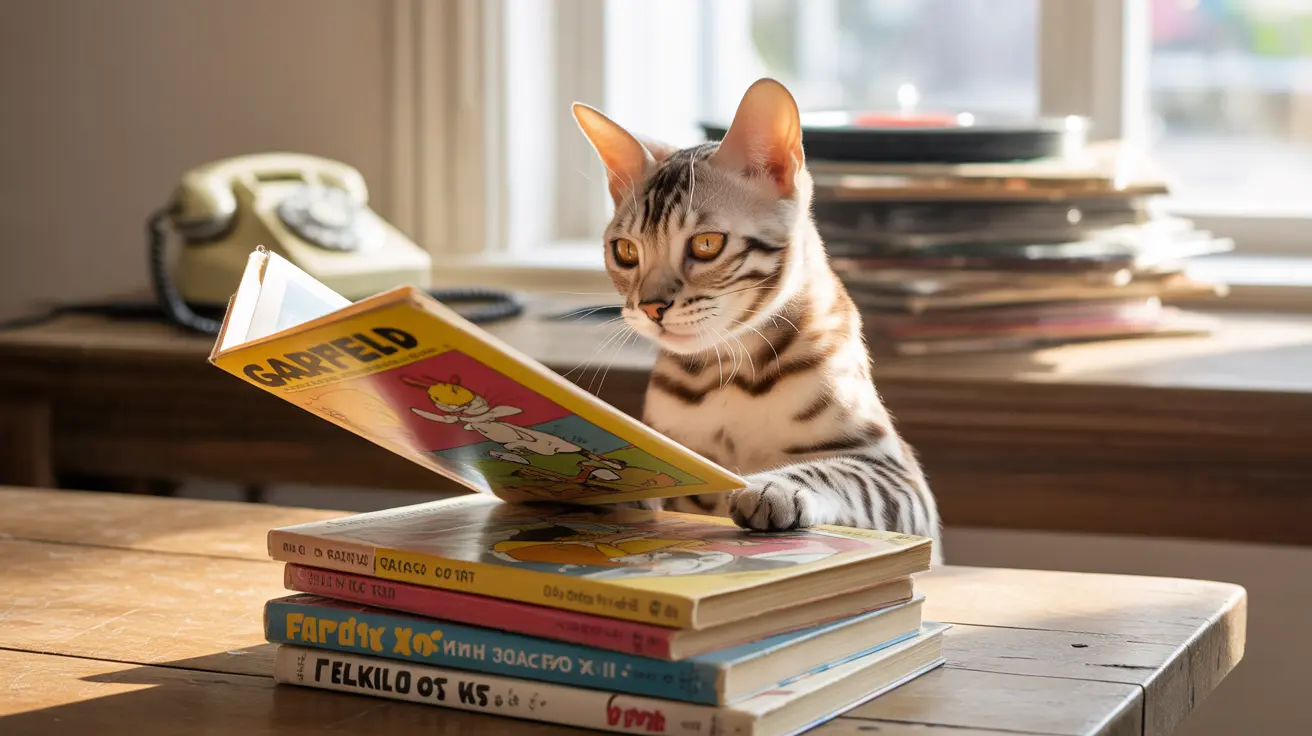Comic strip cats have been delighting readers and shaping pop culture for over a century, becoming some of the most beloved characters in entertainment history. These feline stars have transcended their paper origins to become cultural icons, influencing everything from merchandise to movies.
From the groundbreaking surrealism of Krazy Kat to the lasagna-loving cynicism of Garfield, these illustrated cats have captured our hearts while reflecting and sometimes gently satirizing human nature. Let's explore the rich history and enduring appeal of these remarkable cartoon felines.
The Pioneers of Feline Comics
The story of comic strip cats begins in 1913 with Krazy Kat, created by George Herriman. This pioneering character introduced sophisticated themes and artistic innovation to the medium, proving that comic strips could be both entertaining and thought-provoking. The strip's unique take on unrequited love between Krazy Kat and Ignatz Mouse set new standards for storytelling in comics.
Felix the Cat emerged in 1919, becoming the world's first animated superstar and revolutionizing character merchandising. Felix's success demonstrated the commercial potential of cartoon characters, paving the way for future icons.
The Golden Age of Cartoon Cats
The mid-20th century saw an explosion of memorable feline characters. Tom from "Tom and Jerry" (1940) and Sylvester from Looney Tunes (1947) brought slapstick comedy to new heights, while maintaining surprisingly complex personalities despite their limited success in catching their prey.
Heathcliff's debut in 1973 introduced a streetwise cat with attitude, proving there was room for multiple successful feline characters in the comics world. However, it was Garfield's arrival in 1978 that would redefine the genre entirely.
Garfield: The Modern Icon
Jim Davis's creation of Garfield marked a new era in comic strip cats. The cynical, lasagna-loving cat's universal appeal stems from his instantly relatable traits - his hatred of Mondays, love of food, and sardonic wit resonated with readers worldwide. Garfield's success spawned an entertainment empire including TV shows, movies, and merchandise.
The character's influence extends beyond entertainment, impacting popular culture and even how we view our own pets. Garfield's massive success proved that comic strip cats could be sophisticated brand ambassadors while maintaining their charm and humor.
The Cultural Impact of Comic Strip Cats
These illustrated felines have done more than entertain - they've helped shape our understanding of storytelling, humor, and even social commentary. Characters like Krazy Kat tackled complex themes through seemingly simple stories, while others like Garfield normalized the idea that pets could have rich inner lives and distinct personalities.
The merchandising success of these characters, particularly Felix the Cat and Garfield, established new paradigms for character licensing and brand development in the entertainment industry.
Legacy and Modern Influence
Today's comic strip cats continue to evolve while honoring their predecessors. Digital platforms have opened new possibilities for storytelling, while classic characters remain relevant through reboots and adaptations. The enduring popularity of these characters speaks to their universal appeal and the timeless nature of their humor and charm.
Frequently Asked Questions
What are the earliest comic strip cats, and how did they influence modern comic culture?
Krazy Kat (1913) and Felix the Cat (1919) were the earliest major comic strip cats. They established many conventions still used today, with Krazy Kat introducing sophisticated storytelling and Felix pioneering character merchandising.
How did characters like Garfield and Felix the Cat achieve iconic status and impact the entertainment industry?
They achieved iconic status through consistent character development, relatable personalities, and successful merchandising. Felix revolutionized character licensing, while Garfield became a global phenomenon through successful adaptation across multiple media platforms.
What makes comic strip cats so endearing to audiences, and how do they reflect real-world cat behaviors?
Comic strip cats combine authentic feline behaviors with human personalities, creating relatable characters that mirror both pet owners' experiences and human nature. Their independence, attitude, and quirks reflect real cats while adding human-like wit and commentary.
How have comic strip cats been adapted into other media, such as TV shows and films, and what impact has this had on their popularity?
Successful adaptations have expanded these characters' reach beyond print media, introducing them to new generations. TV shows, movies, and digital content have helped maintain their relevance while creating new revenue streams through merchandising and licensing.
Are there any lesser-known comic strip cats that have contributed significantly to the genre, and what are their notable features?
Characters like Heathcliff and Top Cat, while less famous than Garfield or Felix, have made important contributions to the genre. Heathcliff offered a grittier alternative to Garfield, while Top Cat brought sophisticated urban humor to animated cats.
Today, comic strip cats remain beloved figures in popular culture, continuing to evolve while maintaining the charm and wit that made them popular in the first place. Their influence extends far beyond the comics page, shaping how we view both our feline companions and ourselves.






